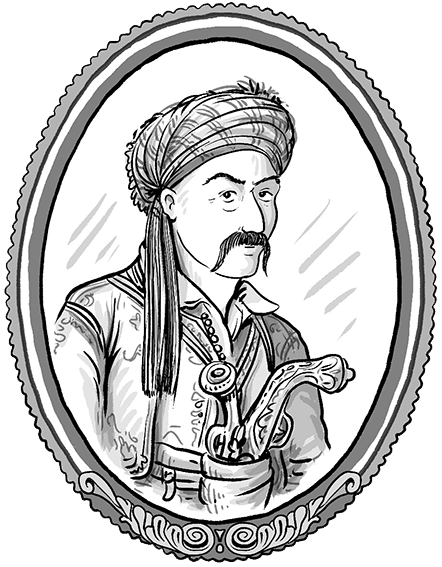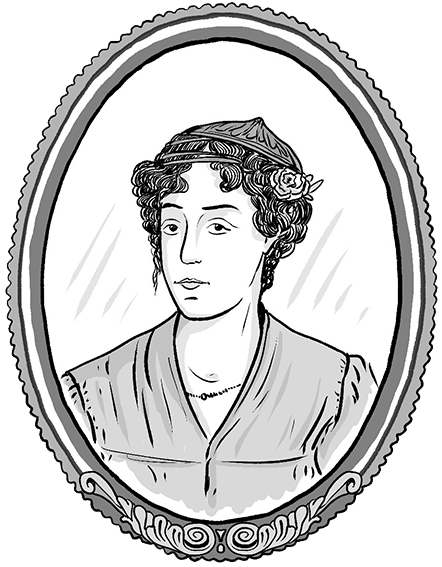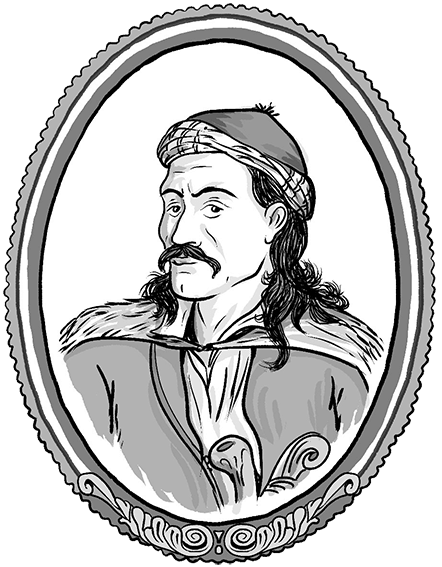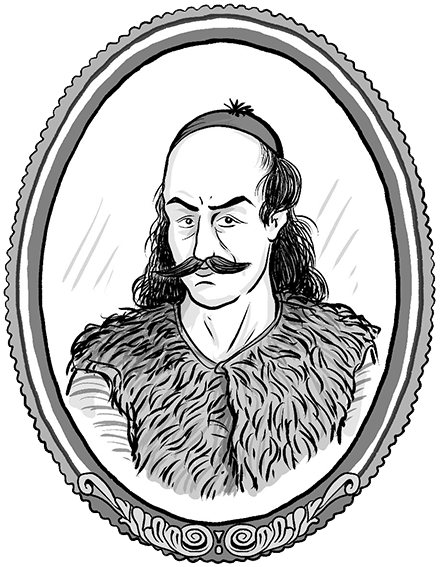


(Nedousa Messinia, 1782– Piraeus, 1849): 1821 fighter. Son of the klepht, Stamatelos Tourkolekas, he too was a klepht when young. In 1805 he fled to the Eptanisa islands where he served in the Russian, French and English military forces. He played an active role in the Revolution. Despite his efforts to reach a compromise, eventually he became involved in the civil war. He was given a number of official positions under Kapodistrias, but with the accession of Otto he was prosecuted and imprisoned. He died blind, sick, and poor.

(Trieste, 1796/7 – Paros, 1840): 1821 fighter. She came from a distinguished Cycladic family. When the Struggle was declared she landed on Mykonos and was positioned as leader of the revolutionaries on the island. She manned two ships and took part in the operations when in 1822 the Ottoman fleet attempted to disembark on the island. Her contribution to mobilizing philhellene circles in Europe through her letters was especially important. She put her fortune at the disposal of the Struggle. She died in poverty on Paros in July 1840.

(Ithaca, aprox. 1788– Athens, 1825): Revolutionary chieftain. Son of the klepht Androutsos Berousis, he was at the court of Ali Pasha at the age of 15. His military skills helped in the consolidation of the Struggle. A victim of internecine disputes, he was initially imprisoned (1824) and later murdered (June 1825) in his cell. His death was considered a very heavy political and moral blow.

(Parnassida Fokida, 1791- Athens, 1826): Revolutionary chieftain. At a young age he served in the armed force of the armatolos Odysseas Androutsos. He took part in many battles and was appointed commandant of the Acropolis as well as head of the “Military camps of Eastern Greece”. He was actively involved in the second civil war, pursuing Androutsos, whose murder he is thought to have been responsible for. He was killed in 1826 by Kioutachis, during the siege of the Acropolis.

(Constantinople, 1791 – Nafplion, 1832): serving officer in the Russian army. Second son of the Phanariot ruler of Moldovlachia, Konstantinos Ipsilantis, he served in the royal guard of the tzar of Russia. After the start of the Revolution in the Danube principalities, he came to Greece as his brother Alexander’s proxy. He arrived on Hydra in June 1821 with the aim of coordinating the political and military powers but clashed with the prokritous (regional powers) and was eventually barred from holding any military or political office.

(Messolonghi, 1788 – Athens, 1873): He received a good education and continued his studies abroad. He returned to his birthplace Messolonghi during the Revolution and after the Exodus from Messlonghi took refuge in Nafplion. In 1826 he married Al. Mavrokordatos’s sister, Aikaterini. He was a member of parliament and a member of the provisional government (1826). During the Kapodistrias administration he supported the opposition. Under Otto, he served as prime minister, minister and ambassador in London and also led the “English party”. He wrote one of the first works of academic historiography about the Struggle of 1821, the “History of the Greek Revolution”.
